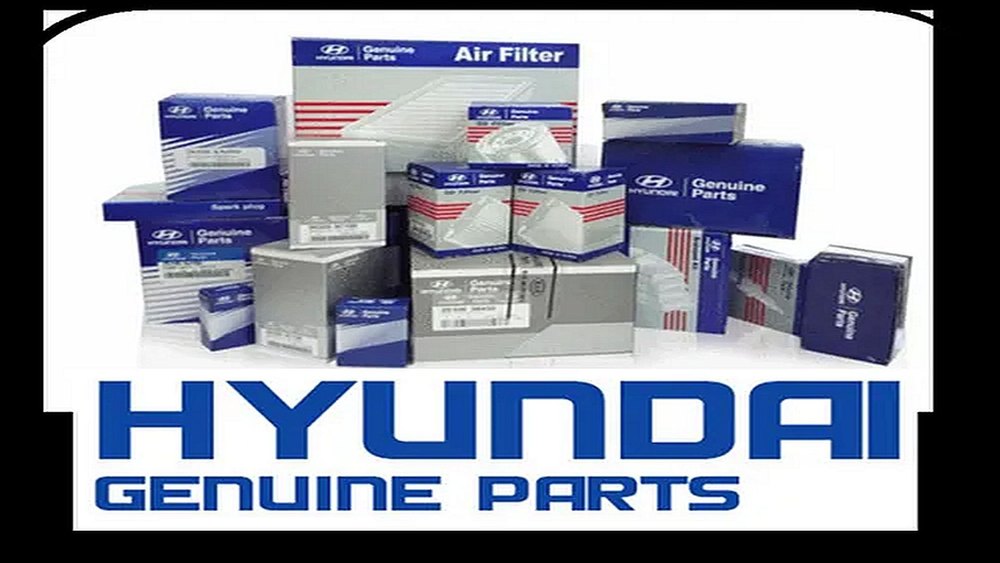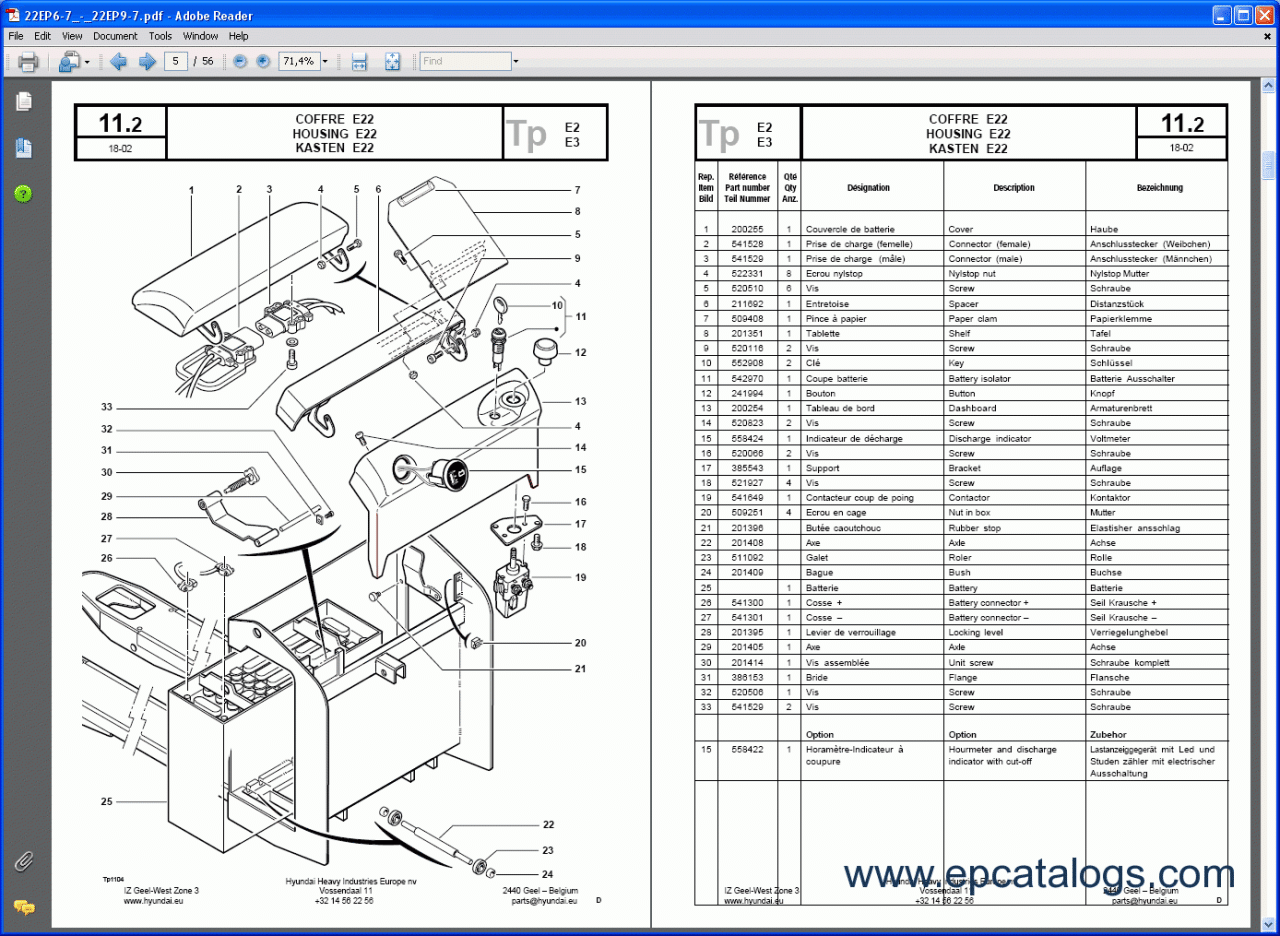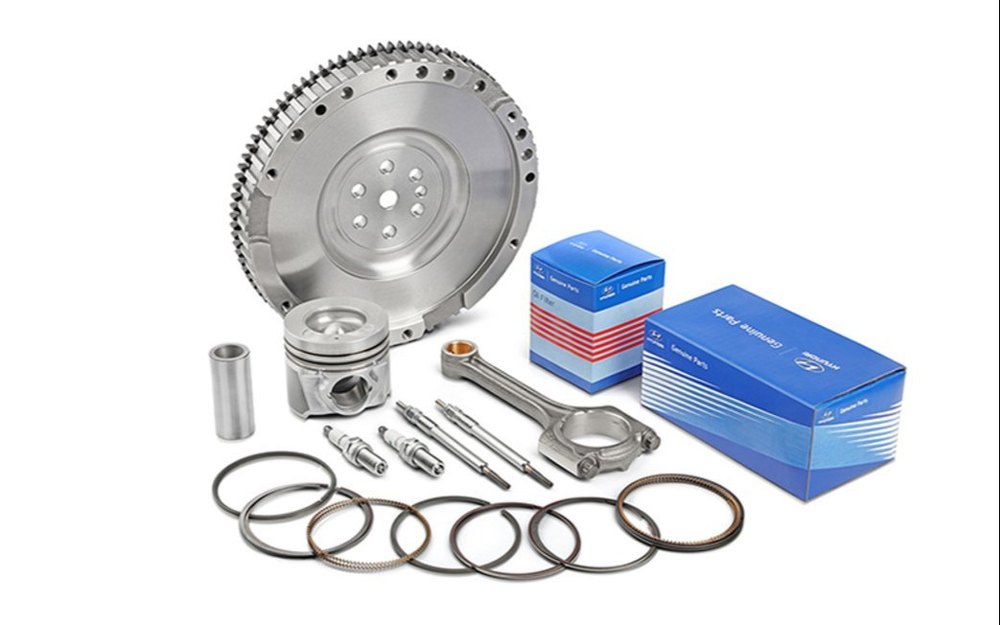Spare part hyundai is a crucial aspect of vehicle ownership, ensuring your Hyundai runs smoothly and efficiently. Understanding the variety of spare parts available, from OEM to aftermarket options, is essential for maintaining your vehicle’s performance and longevity. Hyundai’s commitment to quality manufacturing standards guarantees that these parts meet the rigorous demands of modern driving.
The journey of sourcing and purchasing these spare parts can vary, with options ranging from local dealerships to online marketplaces. Making informed choices about suppliers and understanding the installation process will empower owners to tackle maintenance challenges effectively.
Overview of Hyundai Spare Parts
Hyundai spare parts are essential components that ensure the longevity and optimal performance of Hyundai vehicles. These parts are designed to meet specific standards and cater to various needs, from routine maintenance to major repairs. Understanding the types and quality of these parts is crucial for vehicle owners aiming to maintain their cars effectively.
Hyundai offers a diverse range of spare parts, which can be categorized based on their function and the specific vehicle model. The primary types include engine components, transmission parts, electrical systems, body parts, and suspension systems. Each of these categories contains numerous sub-components that contribute to the overall functionality of the vehicle. The significance of using genuine Hyundai parts lies not only in their fit and compatibility but also in their ability to uphold the manufacturer’s performance standards.
Types of Hyundai Spare Parts, Spare part hyundai
The spare parts available for Hyundai vehicles can be classified into several key categories, each serving a specific purpose. The following sections detail these categories:
- Engine Components: These parts include pistons, gaskets, timing belts, and oil filters, crucial for the engine’s performance and efficiency.
- Transmission Parts: This category includes clutches, gearboxes, and driveshafts, which are vital for the vehicle’s ability to change gears smoothly.
- Electrical Systems: Parts like batteries, alternators, and sensors fall under this category, ensuring the vehicle’s electrical functions operate reliably.
- Body Parts: This includes bumpers, fenders, and doors, essential for the vehicle’s structural integrity and aesthetic appeal.
- Suspension Systems: Components such as shock absorbers, struts, and control arms are fundamental for ride comfort and vehicle handling.
Manufacturing Standards and Quality Assurance
Hyundai maintains stringent manufacturing standards for its spare parts to ensure safety and reliability. Parts undergo rigorous testing during production to meet safety regulations and performance benchmarks. The quality assurance processes include:
- Material Selection: Only high-grade materials are used, which are tested for durability and performance under various conditions.
- Precision Engineering: Advanced technology is employed in the manufacturing process to ensure that each part is produced with exact specifications.
- Quality Control Inspections: Multiple inspections occur throughout the production cycle, including functional tests and stress analysis, to detect defects early.
Role of Spare Parts in Vehicle Maintenance and Performance
Using genuine Hyundai spare parts plays a significant role in maintaining vehicle performance and preventing future issues. Proper maintenance using these parts leads to several benefits:
- Improved Performance: Genuine parts are designed to work seamlessly with the vehicle’s systems, enhancing overall driving experience.
- Extended Lifespan: Regular replacements with high-quality parts can prevent wear and tear on more expensive components, ultimately prolonging the vehicle’s life.
- Safety Assurance: Using the right parts significantly reduces the risk of malfunctions, ensuring safety for drivers and passengers alike.
Sourcing and Purchasing Spare Parts

In the realm of automotive maintenance and repairs, sourcing and purchasing spare parts for Hyundai vehicles is a crucial aspect that directly influences performance and durability. Hyundai owners have various channels available to them for acquiring these essential components, each offering unique advantages tailored to different needs and preferences.
Channels for Purchasing Hyundai Spare Parts
When looking to purchase Hyundai spare parts, several channels present themselves, including online marketplaces and local dealerships. Each option provides distinct benefits and considerations that can affect the decision-making process for vehicle owners.
- Online Marketplaces: Platforms such as eBay, Amazon, and specialized automotive websites offer a vast selection of Hyundai spare parts. Buyers can often find competitive pricing and access to a variety of aftermarket components.
Online shopping empowers consumers with the convenience of comparing prices and reading reviews from other buyers.
- Local Dealerships: Authorized Hyundai dealerships provide OEM (Original Equipment Manufacturer) parts, ensuring authenticity and compatibility with specific models. They often have knowledgeable staff who can assist with parts identification.
Purchasing from a dealership guarantees that the parts meet the manufacturer’s specifications.
Benefits of OEM Parts versus Aftermarket Parts
Choosing between OEM and aftermarket parts is a significant decision for Hyundai owners. Both options come with their own set of advantages and disadvantages, influencing the overall cost and reliability of vehicle repairs.
- OEM Parts: These parts are made by Hyundai or its certified suppliers. They are designed to fit perfectly and function optimally within the vehicle.
Using OEM parts often leads to better long-term vehicle performance and less risk of premature failure.
- Aftermarket Parts: These are produced by third-party manufacturers and can vary significantly in quality. They may offer lower prices, but it is essential to research their reliability and fit.
Aftermarket options can provide cost savings for non-critical repairs but may not always ensure the same level of quality as OEM parts.
Factors to Consider When Selecting a Supplier for Spare Parts
Selecting the right supplier for spare parts is paramount to ensuring quality repairs and maintaining the longevity of Hyundai vehicles. There are several key factors that should be taken into account.
- Reputation: Investigate the supplier’s track record in the industry. Reviews, ratings, and recommendations from other customers can reveal a lot about reliability.
- Warranty and Return Policy: A supplier that offers warranties on parts showcases confidence in their product quality. A favorable return policy is also essential in case the part does not meet expectations.
- Availability of Parts: Ensure that the supplier has a robust inventory of parts for your specific Hyundai model to avoid delays in repairs.
- Pricing: While it’s important to find cost-effective options, the lowest price should not be the only consideration. Weigh the cost against quality, reputation, and warranty.
Installation and Maintenance of Spare Parts: Spare Part Hyundai

Proper installation and maintenance of spare parts are crucial for the performance and longevity of Hyundai vehicles. A well-executed installation ensures that components function as intended, while regular maintenance can extend the life of these parts, reducing the likelihood of premature failure.
The installation of spare parts can vary significantly depending on the specific component being replaced. To aid vehicle owners and technicians, we provide a step-by-step guide for common spare parts installations, a troubleshooting checklist for common installation issues, and essential maintenance tips to ensure optimal performance.
Installation Guide for Common Spare Parts
Installing spare parts correctly is vital for both safety and functionality. Below is a structured guide for installing some of the most commonly replaced components in Hyundai vehicles, such as brake pads, air filters, and batteries.
- Brake Pads
- Begin by lifting the vehicle and securing it with jack stands.
- Remove the wheel to access the brake assembly.
- Unbolt the caliper and slide it off the rotor.
- Remove the old brake pads and replace them with new ones, ensuring proper alignment.
- Reattach the caliper and wheel, then lower the vehicle.
- Test the brakes before driving.
- Air Filter
- Locate the air filter housing, usually found near the engine bay.
- Unclip or unscrew the housing cover.
- Remove the old air filter and clean the housing.
- Insert the new air filter, ensuring it fits snugly.
- Replace the housing cover and secure it.
- Battery
- Ensure the vehicle is off and locate the battery under the hood.
- Disconnect the negative terminal first, followed by the positive terminal.
- Remove any brackets holding the battery in place.
- Replace with a new battery, securing it properly.
- Reconnect the positive terminal, followed by the negative terminal.
Troubleshooting Checklist for Spare Part Installation
After installation, it is crucial to verify that the spare parts function correctly. Here is a checklist to troubleshoot common installation issues:
Always ensure safety first by disconnecting the vehicle’s battery during installation.
- Check for Unusual Noises: Listen for any abnormal sounds during vehicle operation that could signal improper installation.
- Inspect for Leaks: After installing components such as filters or hoses, check for leaks that may indicate a faulty seal.
- Verify Dashboard Indicators: Monitor the dashboard for warning lights that may illuminate due to improper installation.
- Assess Performance: Take the vehicle for a test drive to ensure all systems are functioning as intended.
- Recheck Fasteners: Confirm that all bolts and screws are tightened to manufacturer specifications to avoid vibration-related issues.
Maintenance Tips for Spare Parts
To extend the lifespan of spare parts in Hyundai vehicles, regular maintenance is essential. Below are some critical tips to follow:
Preventive maintenance saves time and money by enhancing the durability of vehicle components.
- Regular Inspections: Schedule routine checks of important components like brakes, filters, and fluids.
- Follow Manufacturer Guidelines: Adhere to the recommended maintenance schedule provided in the vehicle’s owner manual.
- Clean Components Regularly: Keep parts such as filters and engine bays clean to avoid dirt buildup.
- Use Quality Parts: Always opt for OEM (Original Equipment Manufacturer) or high-quality aftermarket parts to ensure compatibility and reliability.
- Document Maintenance Records: Keep track of all maintenance performed, including dates and parts replaced, for future reference.
Innovations in Hyundai Spare Parts

The automotive industry is undergoing a significant transformation, and Hyundai is at the forefront of embracing innovations in spare parts. These advancements not only enhance vehicle performance but also align with the growing demand for sustainability and efficiency. As the automotive landscape evolves, so too does the technology behind spare parts, propelling Hyundai into a new era of automotive excellence.
Recent technological advancements in spare parts for Hyundai vehicles incorporate a range of innovations aimed at improving durability, efficiency, and the overall driving experience. Notably, the introduction of lightweight materials, such as carbon fiber and aluminum, has revolutionized the design of various components, resulting in reduced vehicle weight and improved fuel efficiency. Advanced manufacturing techniques, including 3D printing, allow for the rapid production of complex spare parts, thereby reducing lead times and costs associated with traditional manufacturing processes.
Impact of Electric and Hybrid Technology on Spare Parts Requirements
The shift towards electric and hybrid vehicles is reshaping the requirements for spare parts. The integration of electric drivetrains necessitates a redesign of numerous components traditionally found in internal combustion engine vehicles. This transformation calls for specialized spare parts that cater to the unique demands of electric and hybrid systems, such as high-voltage batteries, regenerative braking systems, and advanced thermal management components.
The following table illustrates the comparison between traditional and innovative spare parts solutions for Hyundai vehicles, highlighting the distinct changes driven by evolving technologies:
| Component | Traditional Solution | Innovative Solution |
|---|---|---|
| Battery | Lead-acid battery | Lithium-ion battery |
| Braking System | Disc brakes with hydraulic systems | Regenerative braking system |
| Powertrain | Internal combustion engine | Electric motor with inverter |
| Cooling System | Conventional radiator | Advanced thermal management systems |
| Weight | Steel components | Composite materials |
The ongoing innovations in spare parts are not merely technical advancements but are pivotal in enhancing the sustainability and performance of Hyundai vehicles. Each of these innovations has a profound impact on how vehicles are designed, manufactured, and ultimately experienced by drivers. As Hyundai continues to innovate, it positions itself as a leader in the automotive industry, embracing a future that prioritizes efficiency and sustainability while meeting the needs of a new generation of drivers.
For those who own a Jeep, finding reliable spare parts is crucial for maintaining performance and safety. The right components ensure that your vehicle runs smoothly, whether you’re tackling rough terrains or daily commutes. Investing in quality spare parts can extend the lifespan of your Jeep and enhance its overall functionality.
When it comes to vehicle maintenance, sourcing high-quality auto spareparts is essential. These parts play a vital role in ensuring that vehicles operate efficiently and safely. By choosing trusted suppliers, car owners can be confident that their vehicles remain in top condition, ultimately leading to a better driving experience.